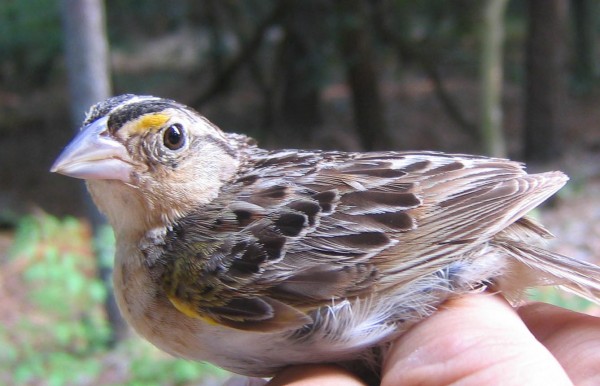Fort Lee avian inventory – a continuing CCB – DOD partnership for conservation
Whimbrel migration tracking
October 12, 2008Aerial surveys show a 50% decline in Virginia whimbrel numbers
October 14, 2008
Written by Bryan Watts
October 13, 2008
The United States Department of Defense (DOD) controls over 10 million hectares of land within the United States making it the third largest land holder in the federal government. Because of the high concentration of military installations within the mid-Atlantic region, DOD lands have the potential to play a leading role in the conservation of declining natural resources. CCB has worked on numerous installations over the past 15 years with the broad objective of determining where DOD lands fit within regional conservation goals and to determine how best to manage species of conservation concern. CCB has a long history of working with large landowners under the belief that small changes in management when applied to large landscapes may have far reaching conservation benefits.
During the late 1990s, CCB conducted 2 years of surveys of all habitat patches within Fort Lee Army Base to establish benchmark population estimates for species of conservation concern. During the spring and summer of 2008, many of these areas were resurveyed. Priority was given to species of management interest or listed as endangered, threatened, or “of concern” at the state or federal level. Habitats surveyed on the installation were forest stands (including pine deciduous, and mixed forest), grassland habitat, shrub-scrub habitat, and urban type habitat.

The grasshopper sparrow is one of many species of conservation concern found during surveys at Fort Lee in Virginia. Photo by Jethro Runco.
Birds were surveyed using a variety of methods including point counts, line transects, recorded playback, and area searches. Priority habitats within the installation area support a diverse array of species. A total of 3,419 birds comprised of 87 species were detected at 89 survey points during the 2008 breeding season. A total of 1,410 birds comprised of 63 species were recorded during the 2008 winter surveys. No birds were detected during the spring marsh bird playback survey. The total number of species detected and densities of birds within Fort Lee is consistent with previous surveys conducted by CCB. Habitats located within Fort Lee support at least twenty-six species of conservation concern.
The early successional / grassland habitat on the base continues to support a large number species of concern in the region. Fort Lee’s long rotational grasslands are of regional significance and harbor some of the highest densities of grasshopper sparrows (species of high concern) in the region. The shrub/scrub habitat located on the installation is important for many species of concern, although it appears from survey data that fewer shrub/scrub obligates are utilizing the base during the breeding season than in past surveys. Most importantly, the prairie warbler and the yellow-breasted chat (species of high concern in the region), were only detected at a small number of previously occupied survey points. The lack of quality habitat and the growth of previous clearcuts may be the reason that fewer shrub/scrub obligates currently breed on the installation. The riparian floodplain forest located within the headwaters of the Blackwater River contains many species of concern. The headwaters provide prime habitat for at least two species of concern breeding on the base: prothonotary warbler and red-headed woodpecker. These species are both dependent on snags for breeding cavities. The pine-dominated habitat within Fort Lee harbors 22 of the 26 Partners In Flight (PIF) watch species detected on the installation. However, the densities of birds within this habitat type are lower overall than the other forest types.



